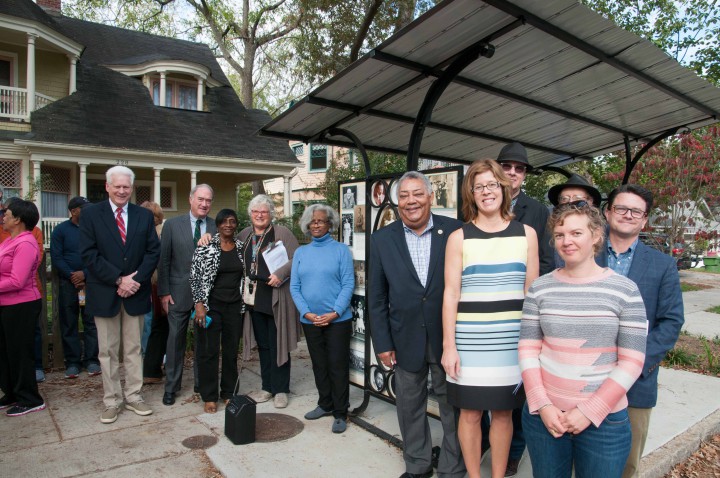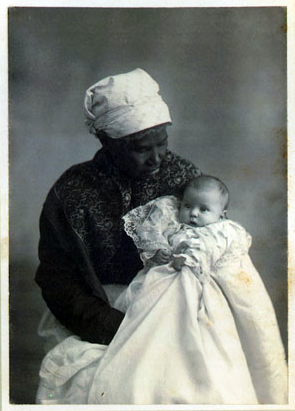ASHEVILLE N.C.— Tempie Avery was a midwife, nurse and former slave of Asheville attorney and state Sen. Nicholas Woodfin. Much of her story is unrecorded, including the exact date of her birth; however, we do know that Woodfin gave her property following the Civil War. Its location is now occupied by the Montford Community Center, which City Council could vote to rename the Tempie Avery Community Center later this month. (See “Tempie Avery to receive naming honor,” avl.mx/46c, Xpress online)
Newspaper clippings during and after her lifetime suggest Avery was a beloved local figure. “Around Town,” a section of the Asheville Daily Citizen, regularly shared information on social events as well as individual residents. On Nov. 30, 1899, the column reported: “Tempie Avery, the colored professional nurse, who has a large number of friends among the white people of Asheville, is very ill at her home, No. 4 Madison street.”
Years later, an unnamed reporter from The Asheville Citizen met with Avery. The article, published on Aug. 3, 1914, claimed she was 105 years old (however, upon her death in 1917, the same paper would report that she died at 90).
Below are excerpts from the article. Note that the language reflects the time period in which it was written.
“Born more than 105 years ago, ‘Aunt’ Tempie Avery, as she is referred to by many of the white residents of the city, and ‘Grandma’ as she is called by her host of grand-children and great grand-children, lives near the intersection of Gay street and Pearson’s drive, occupying the house in which she has lived for the past fifty years. Clear in mind and hale in body, this old colored woman is a remarkable example of those darkies whose lives go to make up so much of the never-to-be-forgotten stories of ante-bellum days. Her hair is white as cotton and her face is wrinkled, but her voice is still strong and her eyes are brighter than those of many people of half her age. …
“She seemed to brighten up at the prospect of telling about the incidents of her life, and it was only necessary to ask a new question every little while to reopen the flood gates of her memory. She stated that she reckoned her age by the first falling of the stars, which occurred in the first few years of the nineteenth century, and told many incidents of her early childhood. One of these was in regard to the Indians. She had known an Indian boy, called John, and she related a story of how she had traded a piece of bread to him for a little bird that he had caught and how he had taken the bird away from her after he had eaten the bread. She told also of seeing the Indians encamped on the side of Overlook mountain after she came to Asheville to live. …
Some of the most interesting parts of her story were in regard to the Indians. She stated that she had been on friendly terms with many of them and that she remembers well how sorrowful they were when they were sent to the Cherokee reservation.”

Avery died on Feb. 17, 1917. Her loyalty to Woodfin was prominently noted in a publication following her death. Historian and University of Georgia professor John Inscoe explains the significance and ubiquity of the loyal slave narrative at that time. According to Inscoe, it was part of “a broad pattern of ‘Lost Cause’ propaganda that prevailed across the South around the turn of the century and into the 1920s, in which whites touted not only the glories of the former Confederacy, but also the loyalty of their slaves to their masters and to the causes.”
On March 1, 1917, two weeks after Avery’s death, The Asheville Citizen published the following:
“As a symbol of utter devotion the negro slave bearing his wounded master from the battlefield has become familiar. In many instances the faithfulness of the man servant was often matched by the devotion of the colored mammies who remained at home with their owners when very often they might have escaped across the lines to freedom.
“The death here of Aunt Tempie Avery, an aged colored woman, once the slave of N.W. Woodfin, of Asheville, recalls such an instance. …
“The one-time slave began her life with Mr. and Mrs. Woodfin when she was fourteen years old. She was married a few years afterwards and at the first opportunity, her husband with the other slaves owned by Mr. Woodfin, made good their escape across the East Tennessee line. Aunt Tempie and her daughter remained in Asheville with Mr. and Mrs. Woodfin and it was in recognition of her services during the days of the war, and of those still more trying days following the war, that she was given the property on Pearson drive. She remained with her master and mistress, nursed and guarded their children, and in more ways than can be told now, say those members of the family still in Asheville, proved her unselfish love for them. Only when her husband came after her, and insisted that she leave with him, did she forsake the Woodfin family.
“And members of that family, remembering all that Aunt Tempie did, her untiring devotion, her spirit of utter and complete self-sacrifice, her refusal to accept that freedom of which the slaves had visions, insist that she is as fit a symbol of the faithful slave as was the man slave who followed his master into the war, and who, more than once, risked his own life to save that of the man owning him.”



What an informative article! It’s nice knowing our community center is attempting to honor a black midwife and beloved community member. I’d consider making an edit though. All the times you wrote “slave,” I believe you meant “enslaved person,” which drives home your point about the “loyal enslaved person” not being a reality, even further.